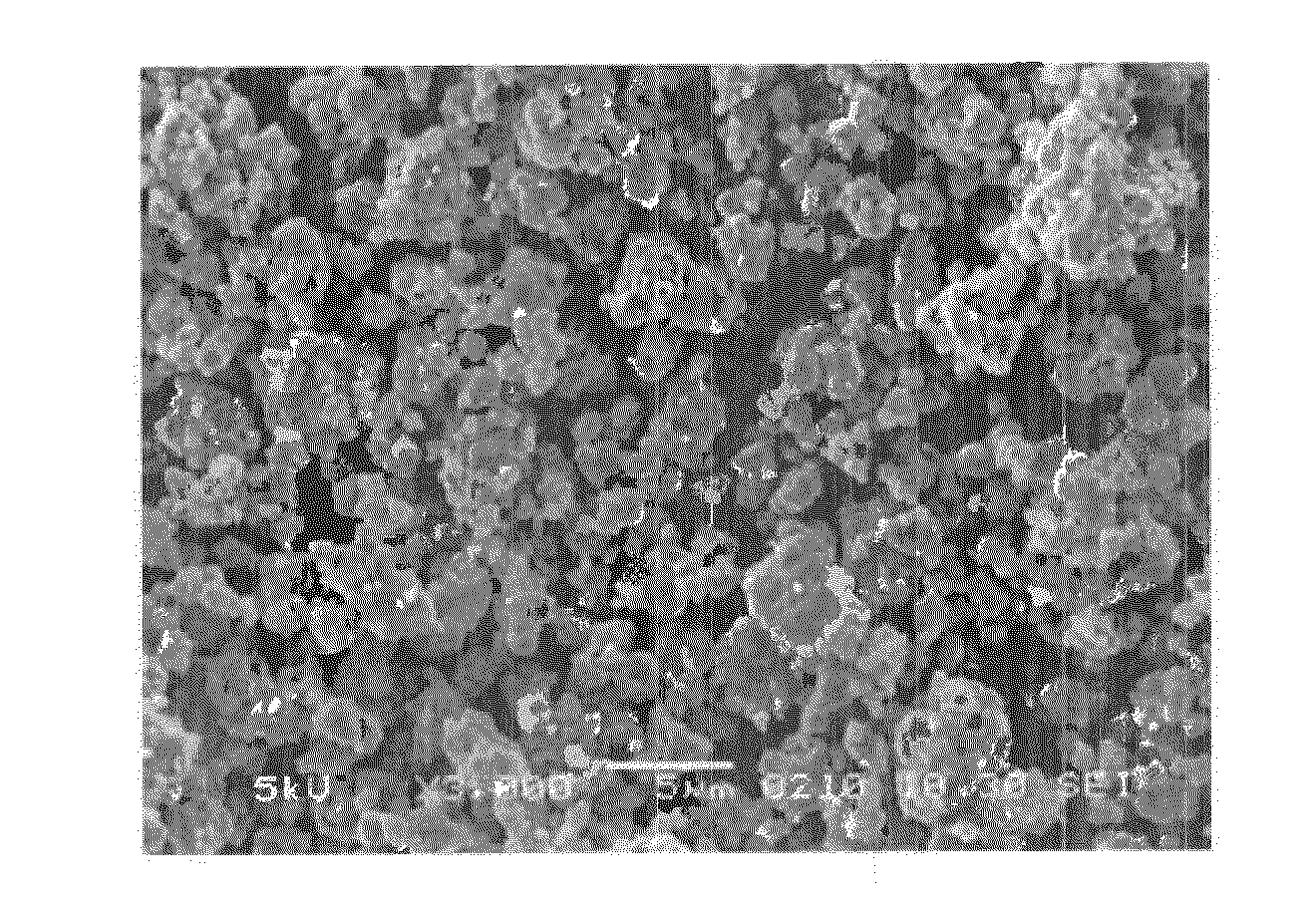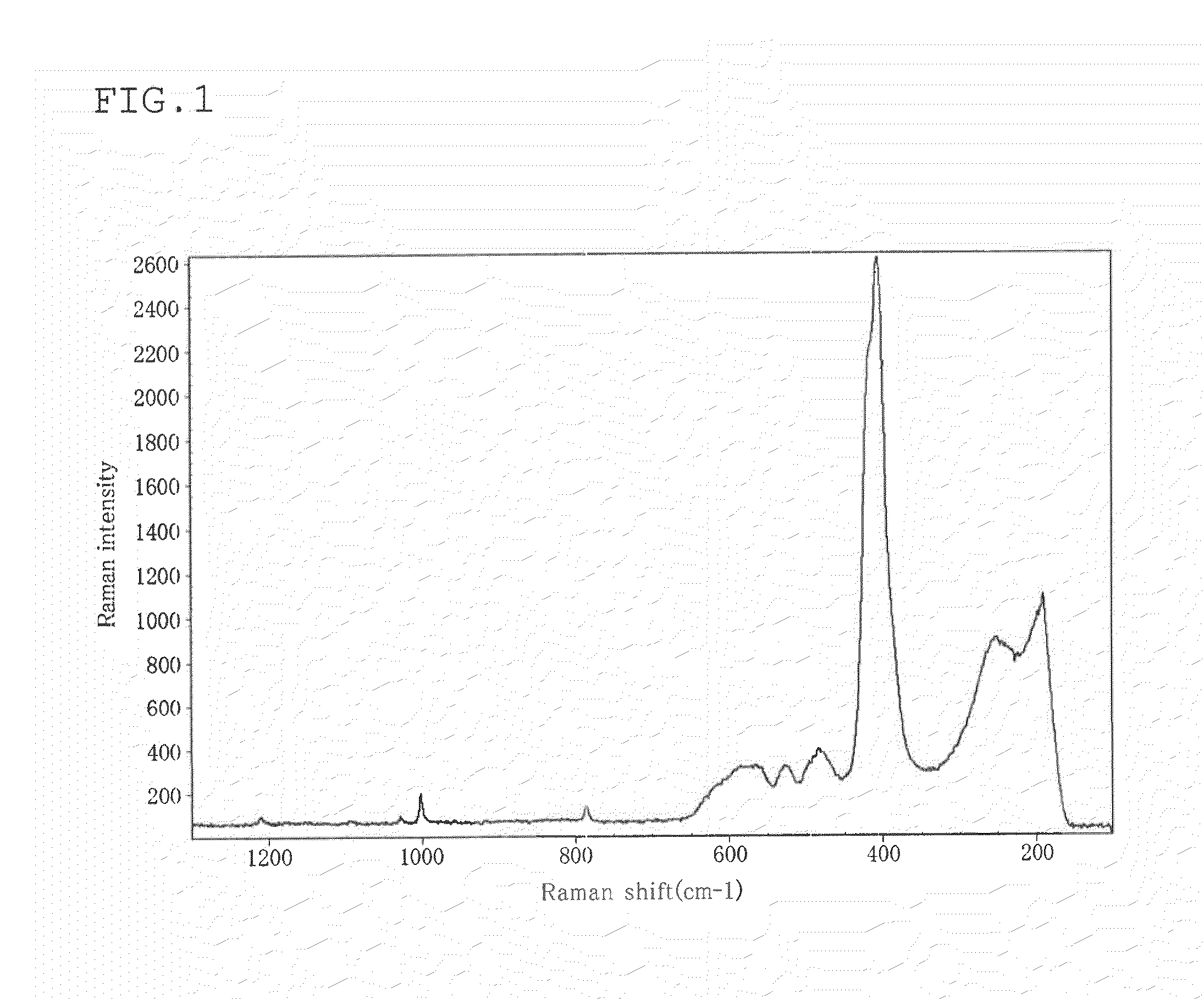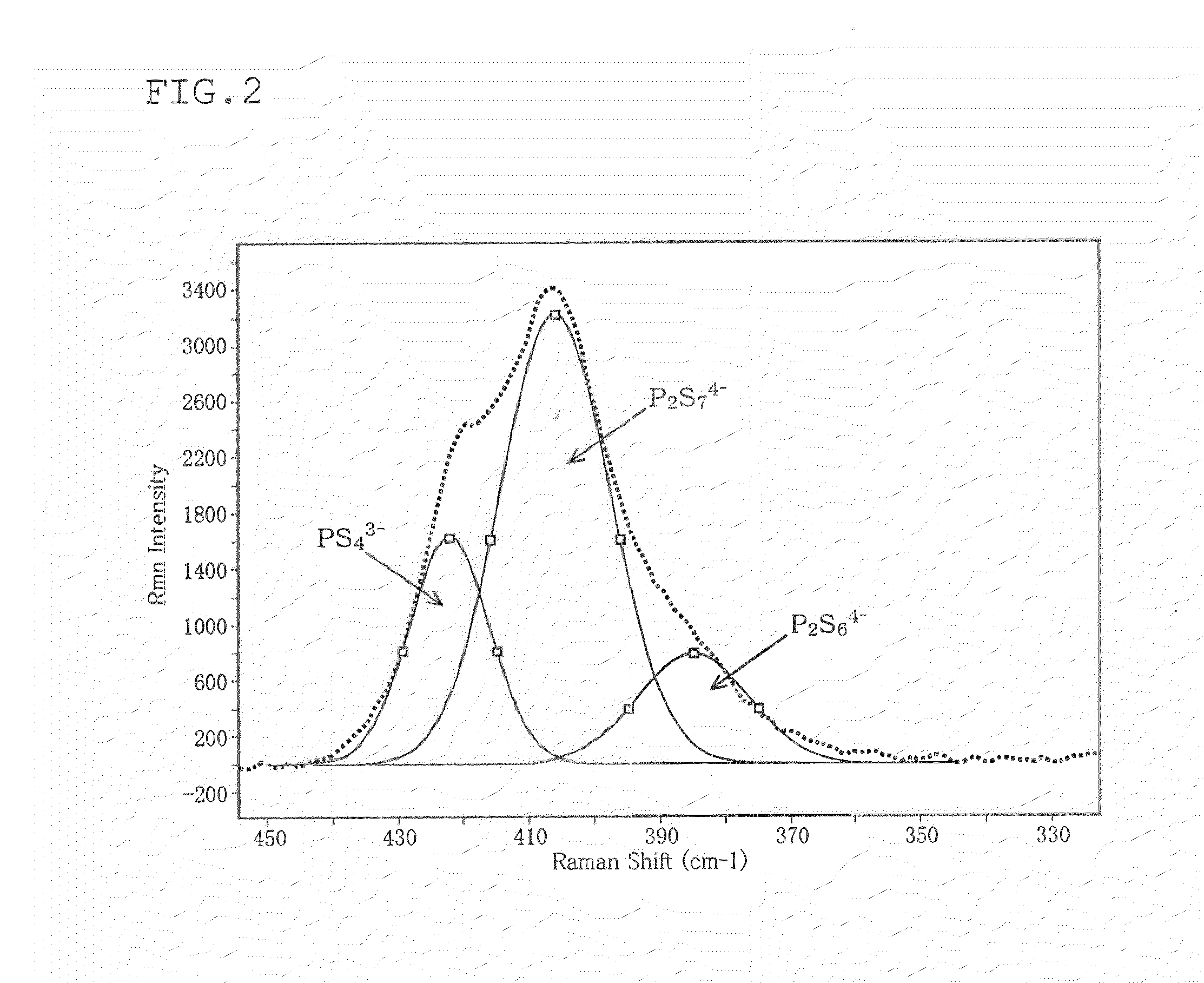Glass comprising solid electrolyte particles and lithium battery
- Summary
- Abstract
- Description
- Claims
- Application Information
AI Technical Summary
Benefits of technology
Problems solved by technology
Method used
Image
Examples
production example 1
(1) Production of Lithium Sulfide
[0073]Lithium sulfide was produced by the method according to the first embodiment (two-step method) disclosed in JP-A-7-330312. Specifically, a 10-liter autoclave equipped with a stirring blade was charged with 3326.4 g (33.6 mol) of N-methyl-2-pyrrolidone (NMP) and 287.4 g (12 mol) of lithium hydroxide. The mixture was heated to 130° C. with stirring (300 rpm). After heating, hydrogen sulfide was bubbled into the mixture for 2 hours at a rate of 3 L / min. The temperature of the reaction solution was increased in a nitrogen stream (200 cc / min) to desulfurize and hydrogenate the reacted lithium hydrosulfide and obtain lithium sulfide. Water produced by the reaction between hydrogen sulfide and lithium hydroxide as a by-product started to evaporate as the temperature of the reaction solution increased. The evaporated water was condensed using a condenser, and removed from the system. The temperature of the reaction solution increased when water was dis...
example 1
[0077]The apparatus shown in FIG. 5 was used. A bead mill “Star Mill Miniature” (0.15 l) (manufactured by Ashizawa Finetech Ltd.) was used as the stirrer. 450 g of zirconia balls having a diameter of 0.5 mm were used as the media. A glass reactor (1.5 L) equipped with a stirrer was used as the reaction vessel.
[0078]A mixture prepared by adding 1080 g of dehydrated toluene (water content: 10 ppm or less) to 39.05 g (70 mol %) of Li2S produced in Production Example 1 and 80.95 g (30 mol %) of P2S5 (manufactured by Aldrich) was put in the reaction vessel and the mill.
[0079]The mixture was circulated at a flow rate of 400 mL / min using a pump, and the reaction vessel was heated to 80° C. Hot water was externally circulated into the mill so that the liquid temperature was maintained at 70° C., and the mill was operated at a circumferential speed of 10.9 m / s. After reacting the mixture for 8 hours, the mixture was vacuum-dried at 150° C. to obtain a white powder.
[0080]The Raman spectrum of...
example 2
[0090]A glass powder was produced, and the Raman spectrum of the glass powder was measured in the same manner as in Example 1, except that the reaction time was changed to 12 hours. The results are shown in Table 1.
PUM
| Property | Measurement | Unit |
|---|---|---|
| Fraction | aaaaa | aaaaa |
| Particle size | aaaaa | aaaaa |
| Ratio | aaaaa | aaaaa |
Abstract
Description
Claims
Application Information
 Login to View More
Login to View More - R&D
- Intellectual Property
- Life Sciences
- Materials
- Tech Scout
- Unparalleled Data Quality
- Higher Quality Content
- 60% Fewer Hallucinations
Browse by: Latest US Patents, China's latest patents, Technical Efficacy Thesaurus, Application Domain, Technology Topic, Popular Technical Reports.
© 2025 PatSnap. All rights reserved.Legal|Privacy policy|Modern Slavery Act Transparency Statement|Sitemap|About US| Contact US: help@patsnap.com



